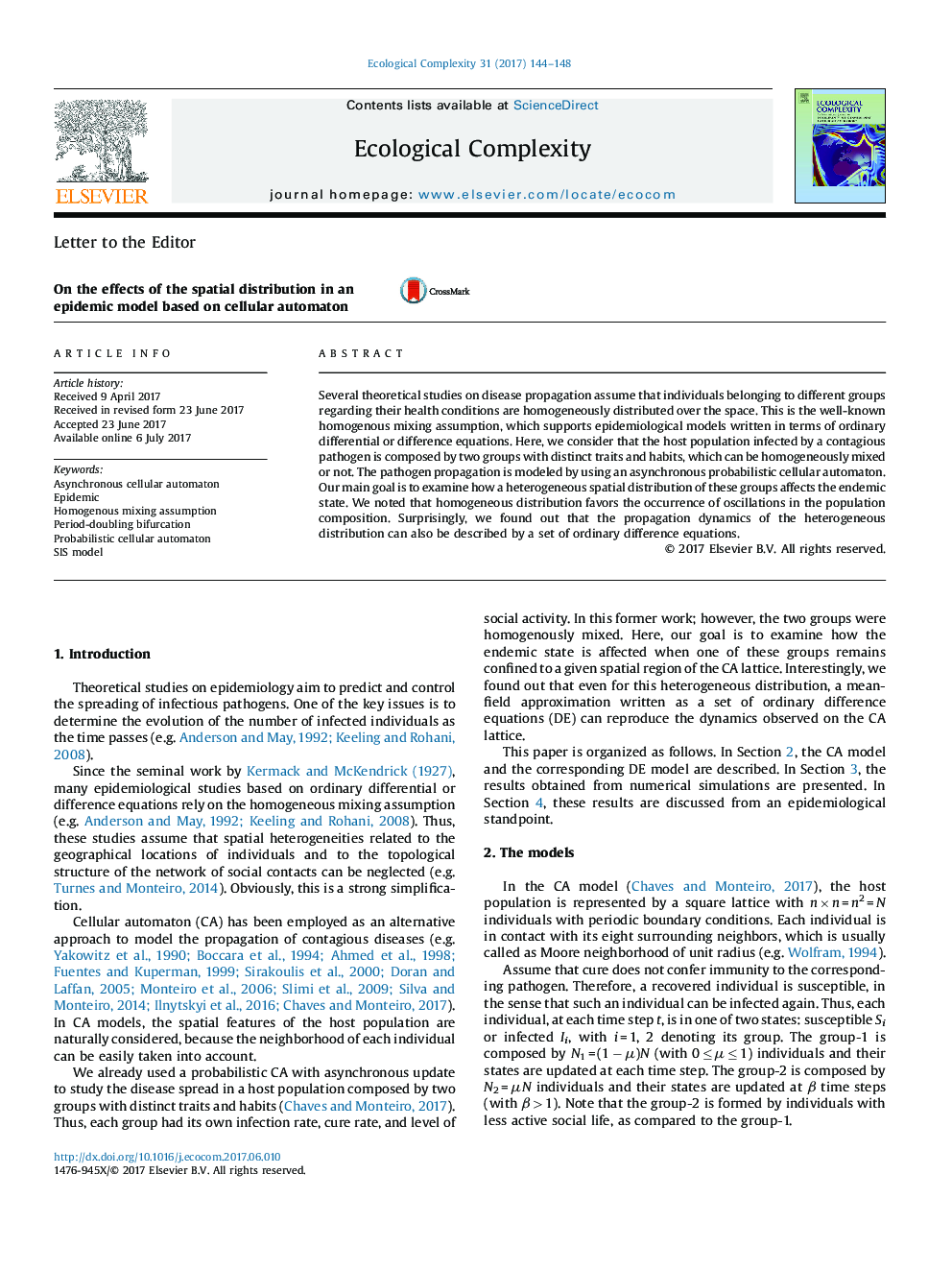| کد مقاله | کد نشریه | سال انتشار | مقاله انگلیسی | نسخه تمام متن |
|---|---|---|---|---|
| 5741267 | 1617083 | 2017 | 5 صفحه PDF | دانلود رایگان |
- Disease spread is modeled with an asynchronous probabilistic cellular automaton.
- Difference equations (DE) based on the homogenous mixing assumption are also used.
- The host population is composed by two groups which are homogeneously mixed or not.
- Homogeneity favors the occurrence of oscillations in the population composition.
- Surprisingly, the dynamics of the heterogeneous distribution is described by DE.
Several theoretical studies on disease propagation assume that individuals belonging to different groups regarding their health conditions are homogeneously distributed over the space. This is the well-known homogenous mixing assumption, which supports epidemiological models written in terms of ordinary differential or difference equations. Here, we consider that the host population infected by a contagious pathogen is composed by two groups with distinct traits and habits, which can be homogeneously mixed or not. The pathogen propagation is modeled by using an asynchronous probabilistic cellular automaton. Our main goal is to examine how a heterogeneous spatial distribution of these groups affects the endemic state. We noted that homogeneous distribution favors the occurrence of oscillations in the population composition. Surprisingly, we found out that the propagation dynamics of the heterogeneous distribution can also be described by a set of ordinary difference equations.
Journal: Ecological Complexity - Volume 31, September 2017, Pages 144-148
